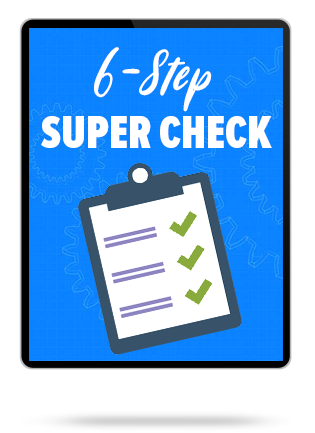Nearing retirement can be an exciting time in life. After all, it’s what you’ve been working towards for 30-odd years. But it can also cause anxiety. You’re not only concerned about whether you can afford to retire, but you might not know what you will do in retirement.
A transition to retirement pension can ease any financial and psychological concerns you may have about cutting off your lifeline to work-related earnings and career fulfillment. Here’s how…
What is a Transition to Retirement Pension?
A transition to retirement pension is an income stream you can commence with your super balance once you have reached your superannuation preservation age, even if you are still working.
A transition to retirement (TTR) pension can supplement your work-related earnings if you decide to reduce to part-time or casual work in the lead up to full retirement.
Another benefit of a TTR pension is the ability to implement a transition to retirement strategy, which involves salary sacrificing into super to reduce personal income tax and then drawing tax-free income from your TTR pension. This strategy is generally only beneficial if you are over age 60.
Related article: 3 Reasons To Start A Transition To Retirement Pension
Transition to Retirement Pension Rules
A transition to retirement pension is similar to an account based pension, but has a few additional rules.
To start a transition to retirement pension, you first need to have reached your superannuation preservation age.
Once you start a TTR pension, you must receive an income of between 4% and 10% of your account balance each financial year. This lower and upper threshold is calculated on your account balance as of 1 July each year and applies for the remainder of the financial year. If you start a TTR pension part way through a year, the 4% is pro-rata based on the remaining days in the financial year, divided by the total days in the year. The 10% upper threshold remains calculated based on a full year (i.e. no pro-rata necessary).
Read More: Transition to Retirement Rules
Transition to Retirement Age & Eligibility
In order to start a transition to retirement pension, you need to have met the TTR pension age – known as your superannuation preservation age. Once you have reached your preservation age, you are eligible to access your super in the form of a transition to retirement pension, even if you are still working.
Read More: Transition to Retirement Pension Age
Your preservation age is based on the year and month you were born, as shown in the table below:
| Date of Birth | Preservation Age |
|---|---|
| Before 1 July 1960 | 55 |
| 1 July 1960 – 30 June 1961 | 56 |
| 1 July 1961 – 30 June 1962 | 57 |
| 1 July 1962 – 30 June 1963 | 58 |
| 1 July 1963 – 30 June 1964 | 59 |
| After 30 June 1964 | 60 |
Transition to Retirement Tax
When is comes to transition to retirement tax, there are two types of taxes that apply: investment earnings tax and pension income tax.
Investment earnings include realised capital gains and income. Examples of income are dividends, distributions, rent and interest.
Investment earnings tax relates to how the earnings derived from the investments within the pension account are taxed. Regardless of age, the investment earnings within a TTR pension are taxed at 15%. However, realised capital gains are only taxed at 10% if the investment sold was owned for longer than 12-months, due to receiving a 1/3rd discount.
The way in which pension income is taxed in the hands of you, the pension recipient, is based on whether you are over or under age 60.
Transition to Retirement Pension Under 60
Your transition to retirement pension balance will consist of taxable and/or tax-free components. When pension payments are received, the payments consist of a proportionate amount of taxable and tax-free components based on your balance.
While under age 60, the tax-free portion of pension payments will be received tax-free, but the taxable portion of the payments will be assessable for income tax purposes. However, you will receive a tax offset equal to 15% of the taxable component, which is considered a refund of contributions tax.
For example, if you had a TTR pension balance of $300,000 consisting of 25% ($75,000) tax-free components / 75% ($225,000) taxable components and you opted to receive a pension payment of $20,000 for the year; then of this, $5,000 (25%) would be tax-free and $15,000 (75%) would be assessable as income and taxed at your individual tax rate together with all other income you receive for the year, less a tax offset equal to 15% of the taxable portion of the pension payment (i.e. $15,000 x 15% = $2,250 tax offset).
Transition to Retirement Pension Over 60
If you are over age 60, all transition to retirement pension is received tax free, even if it includes a taxable component.
How Does Transition to Retirement Work? (Example)
To show how a TTR pension works, we’re going to go through a transition to retirement example.
Sandra is 61 years of age and looking to reduce her working hours to part-time work with her current employer. Her salary has reduced from $80,000 per year to $40,000.
On Sandra’s full-time wage of $80,000, she received a net after-tax income of $63,000 and she needs this level of income in order to continue covering her lifestyle expenses.
Sandra has $400,000 in super, so she contacts her super fund and tells them she would like to start a transition to retirement income stream with $390,000 of her balance, so that her accumulation account remains open with $10,000 for future contributions (note: be mindful of loss of insurance and deductible contribution risks of starting a pension).
Sandra’s super fund directs her to the documentation she needs to complete to start the TTR pension. She completes the paperwork and her TTR pension is in place 2 weeks later. Sandra has now also reduced to part-time hours.
Sandra’s net after-tax income on her reduced $40,000 wage is $36,000. She is able to receive an income of between 4% ($15,600) and 10% ($39,000) of her TTR pension starting balance.
In order to cover her living expenses of $63,000, Sandra nominates to receive $27,000 income each year, which together with her reduced bet salary of $36,000 will give her $63,000 net income each year.
This video explains exactly how a Transition to Retirement Pension works:
Transition to Retirement Changes
Since the inception of the transition to retirement pension in 2005, the following changes to the rules have occurred.
2009FY – 2011FY
As a result of the Global Financial Crisis (GFC), the Government reduced minimum pension payments by 50%. Therefore, only 2% needs to be withdrawn from TTR pensions for these financial years.
2012FY and 2013FY
As a result of the Global Financial Crisis (GFC), the Government reduced minimum pension payments by 25%. Therefore, only 3% needs to be withdrawn from TTR pensions for these financial years.
1 July 2017
Investment earnings within TTR pension accounts are no longer received tax free from this date onwards. Instead, earnings are taxed in the same manner as an accumulation account.
2019FY – 2023FY
As a result of the Coronavirus Covid-19 pandemic, the Government reduced minimum pension payments by 50%. Therefore, only 2% needs to be withdrawn from TTR pensions for these financial years.
2023FY Onwards
Minimum pension payment relief of 50% not extended. Standard minimum pension payment drawdown rates apply from 2023 onwards.
Our financial planning firm, Toro Wealth, specialises solely in helping 50 to 70 year olds optimise their financial position in the lead up to retirement. If you’re interested in learning more about our service and cost, click here.
Frequently Asked Questions
Here are some frequently asked questions relating to transition to retirement pensions.
What Does Transition to Retirement Mean?
Transition to retirement means the process of progressively relying less on work-related earnings and more on superannuation and investments to cover your lifestyle expenses.
At the commencement of transitioning to retirement, the majority of your income will be work-related and, as you get closer to full retirement, more of your income will come from retirement investments. The period that you spend transitioning to retirement is up to you – it may be as little as 6 months or as long as five years.
A transition to retirement pension is the most commonly used product in helping you transition into retirement.
Is a Transition to Retirement Pension a Good Idea?
A transition to retirement pension is a good idea because it provides you with great career flexibility and strategic opportunities, enabling you to work longer, reduce working hours sooner and employ tax-effective strategies to increase your retirement savings. It can be a great way to maximise your financial position in the lead up to retirement, especially upon reaching age 60.
How Do You Successfully Transition to Retirement?
You successfully transition into retirement by first attaining your superannuation preservation age, which provides you with the ability to access your super via a transition to retirement pension, even if you are still working full time. You then calculate how long you will need to continue working at your reduced working capacity, before full retirement, while still meeting your retirement income objectives.
How Do I Start a Transition to Retirement
You can start a transition to retirement pension by contacting your superannuation fund and asking if they offer transition to retirement pensions. If they do and you are comfortable using their product, you can then follow the process to commence the pension. Alternatively, you may choose to start a transition to retirement pension with a different superannuation fund. Before starting a transition to retirement pension, you must first have reached your preservation age.There are a number of things you should consider before starting a TTR pension and therefore professional financial advice is recommended.
Discover More Content on SuperGuy:
- Transition to Retirement: Everything You Need to Know
- Transition to Retirement Pension Rules
- Transition to Retirement Pension Maximum Withdrawal
- TTR Income Stream
- TTR Pension Over 60

Hi, I hope you enjoyed reading this article.
If you want my team and I to help with your retirement planning, click here.
Thanks for stopping by - Chris



